A mental packing list of sorts, The Good Traveler lays out our aspirations on the path to becoming more respectful, considerate travelers. To learn how these ideas can shift and shape our journeys, we have invited ten travelers we admire to go into the world and explore each tenet.
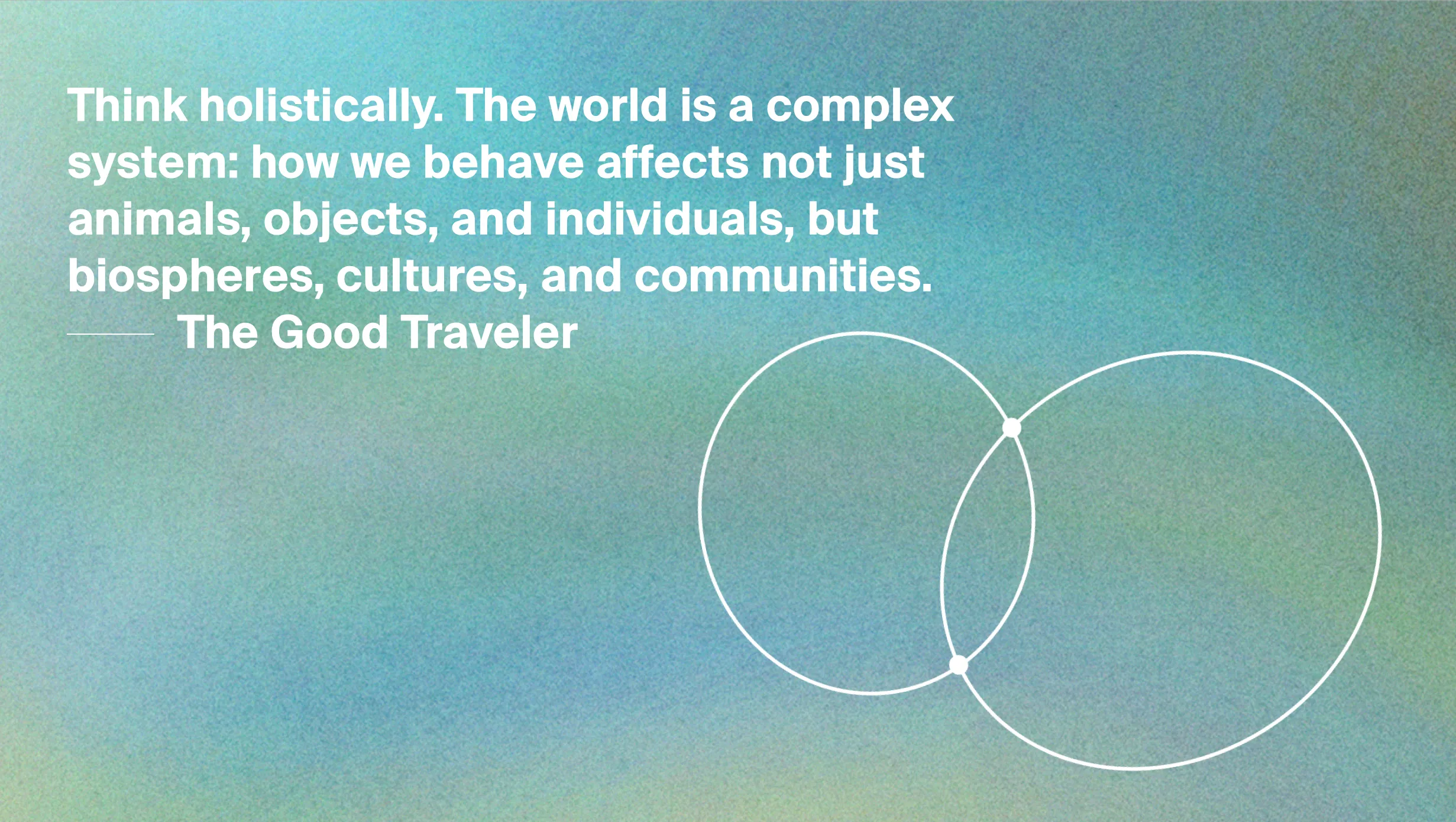
Words Vidula KotianImages Press materialsDate 20 April 2023
“No idea that protects the planet is crazy,” says Gary Bencheghib. The French filmmaker and environmentalist was recently awarded the Ramon Magsaysay Award, the Asian Nobel Prize for his work at Sungai Watch, a charity he established with his two siblings to protect and restore Indonesia’s rivers by developing and designing simple technologies to stop the flow of plastic pollution from going into the ocean.
The 28-year-old is fighting plastic pollution one river at a time by not only placing specially designed barriers in the stream to catch waste and create jobs for local communities to collect said trash, but also setting up recycling plants to treat waste and upcycle plastic into art, furniture, and even a house. Sungai Watch creates annual reports on the kinds of trash collected, sorted by brand, to hold corporations accountable. Since 2020, the organization has collected 1,041,560 kilograms of plastics and regenerated over 30 hectares of mangroves in Denpasar. In fact, Bencheghib and his siblings have been so successful in Indonesia that they’ve been invited by other countries to replicate similar models there. We had a chat with this inspiring, inventive, and optimistic eco-warrior about his journey thus far.

Gary Bencheghib
Gary Bencheghib moved to Bali with his family when he was just 9, and at age 14, galvanized a movement to cleanup of the island’s beaches. It was his documentation of the pollution levels in Indonesia’s dirtiest river, Citarum, along with his brother Sam on kayaks made of plastic bottles that went viral on social media and got him a meeting with the Indonesian president four months later to discuss solutions to the problem.
We saw the slow deterioration of Bali after the rainy seasons, with more and more plastic on our coastline. Naturally, as teenagers, when you grow up on such a pristine island and you see how bad it gets, it was an internal want to be part of the solution and not part of the problem. So, we started activism 14 years ago...that’s half my life now. At the very beginning, it was very simple coastal cleanups. But now we do a lot more than that.
At Sungai Watch, we’re on a mission to clean rivers by offering simple solutions. We started with one barrier in the river and bringing the trash to my parents’ house. We didn’t have any facilities, money, and, at first, we were only able to employ one person. Today, we employ 120 people across the island. They get paid better than minimum wage…better than your average waiter in Canggu. They get health insurance. That’s happened through the incredible support of community. Now, whenever we do cleanups, a lot of locals come and help. It’s sort of growing into a movement, which is so beautiful to see.
Yes, every third Friday, which is river cleanup day in Bali, we get 100 to 200 people that come. There are young people, women groups, social groups, farmer groups, all rising up and saying “enough,” all wanting to clean Bali.
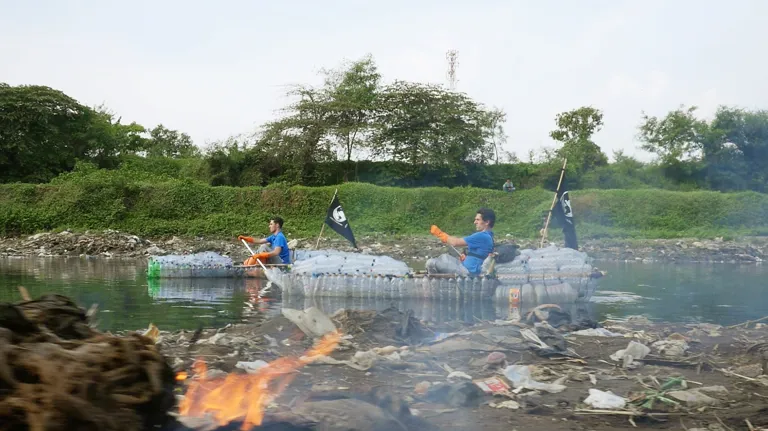
The Citarum River campaign The Bencheghib brothers on kayaks made from plastic bottles collected from the river
In the summer 2017, my brother Sam and I had the crazy idea to flow down the dirtiest river in the world on the material that feeds them. We created a kayak made of plastic bottles and for two weeks, rowed down the river without any sort of awareness of what we were getting ourselves into. Very quickly, I think an hour in, we thought, “Oh no, what did we do?” The smells were completely atrocious. We saw all sorts of dead animals and, in some parts of the river, we couldn’t get through because it was so polluted. It just showed how far we’ve come in the destruction of our planet. The Citarum has roughly 27 million people living along its waters. We understood just how bad things were and looking back now, it was a life-changing trip that has got us on this journey of dedicating a 100 percent of our work and our lives to cleaning up our waters.
We’ve been focused on short-form videos and combining it with our passion for adventure. We released a lot of short-form videos of the trip and overnight those videos went viral. Two weeks later, we get a phone call from the Ministry of Environment wanting to meet us and four months later, we met the Indonesian president, who decided to launch the country’s biggest cleanup after watching our videos. He deployed 7,000 military troops to help. That was an amazing moment, to see the power of media and the power of crazy ideas. We haven’t given up since. We still push shocking images, but also look for solutions to stop one of our world’s biggest environmental disasters—plastic pollution.
Yes, they’re always the first people that we contact. For every cleanup that we do, we always need to get government permits, so you can get anywhere from 50 to 1,000 soldiers at a time. That’s been a powerful tool.
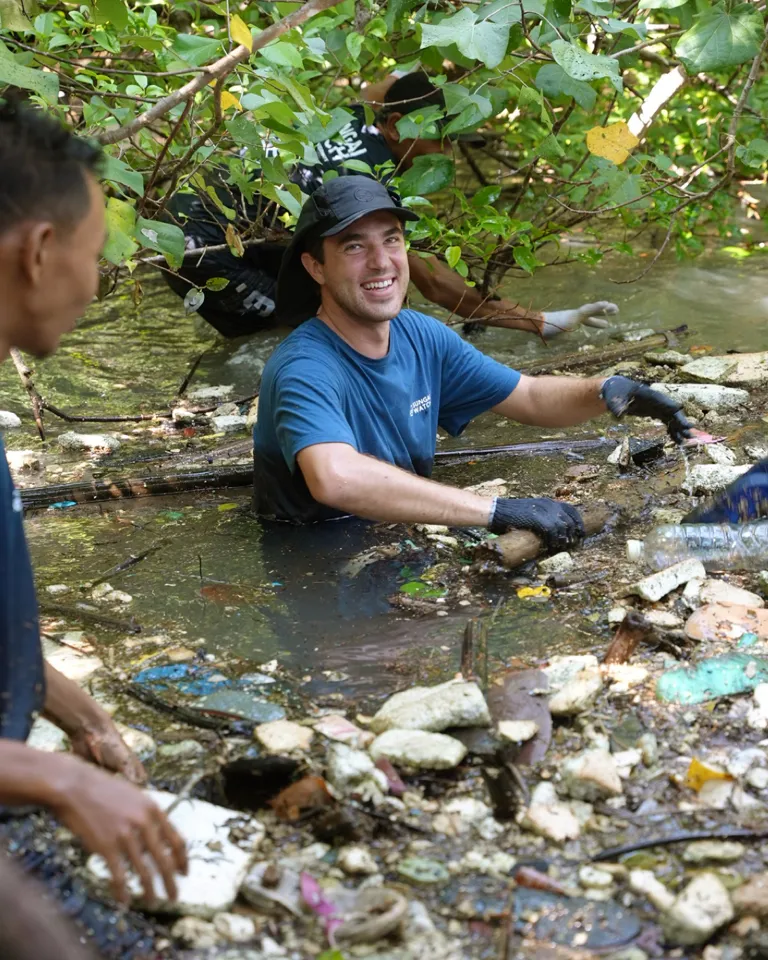
Mangrove cleanup The coastal waterways are clogged
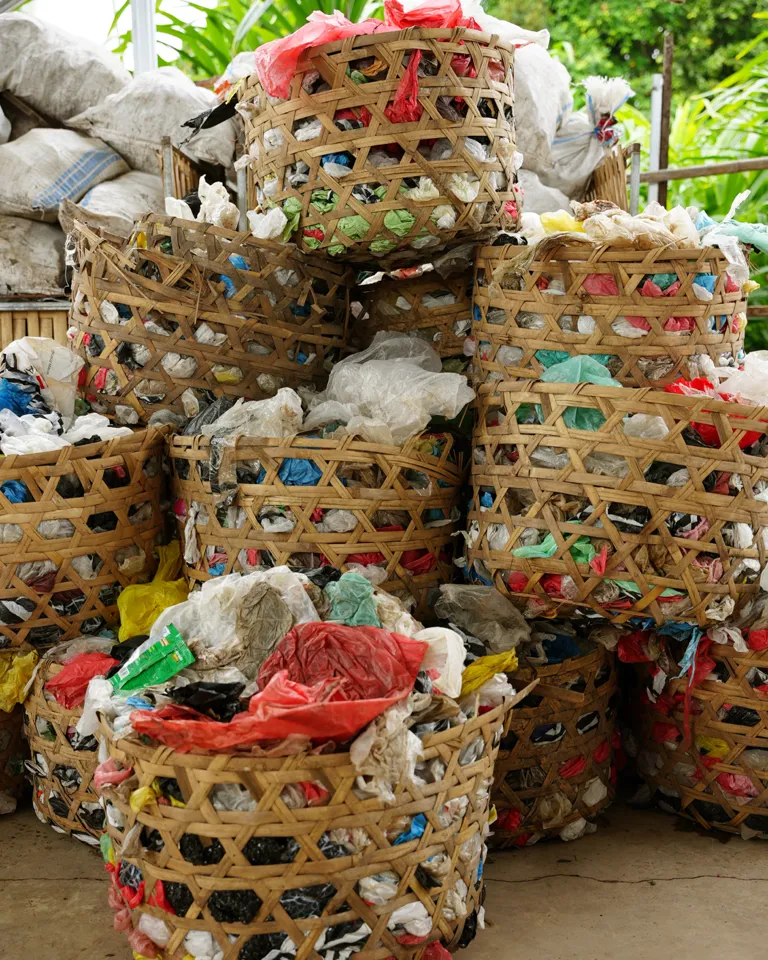
Over two tons Sungai Watch collects plastic everyday
Gary Bencheghib
Our generation is seeing the impact that plastic pollution has and a lot of other environmental issues. There’s really no looking away, especially when you’ve grown up in a country like Indonesia at the forefront of climate change, where our oceans are rising. There are youths all around the country and the world who are doing amazing projects. The time is now and it’s great to see, not just the youth, but people of any age trying to combat these major environmental problems.
Some of the partners we work with. For example, we have this engineering guy who is building these machines to recycle plastic here in Bali. There are also young activists who are focusing more on legislations to ban plastics.
We just onboarded our first designer, Michael Russek. We’re excited to be launching a full-on social enterprise. One of the most challenging parts is the entire washing mechanism of processing the plastic we collect and treating it. When we started, we had no idea what to do with the collected plastic because the right infrastructure to treat the waste was missing. We had to build everything from scratch. A lot of our partners along the way have been engineers and people with more experience doing this on a massive scale. It’s been quite tricky as there’s not really anybody recycling dirty river plastic around the world. We’re dealing with the worst types out there. Now we’re trying to collaborate with designers and artists to show them what’s possible with the material and try to set forward a new type of normal in how to make recycled products.
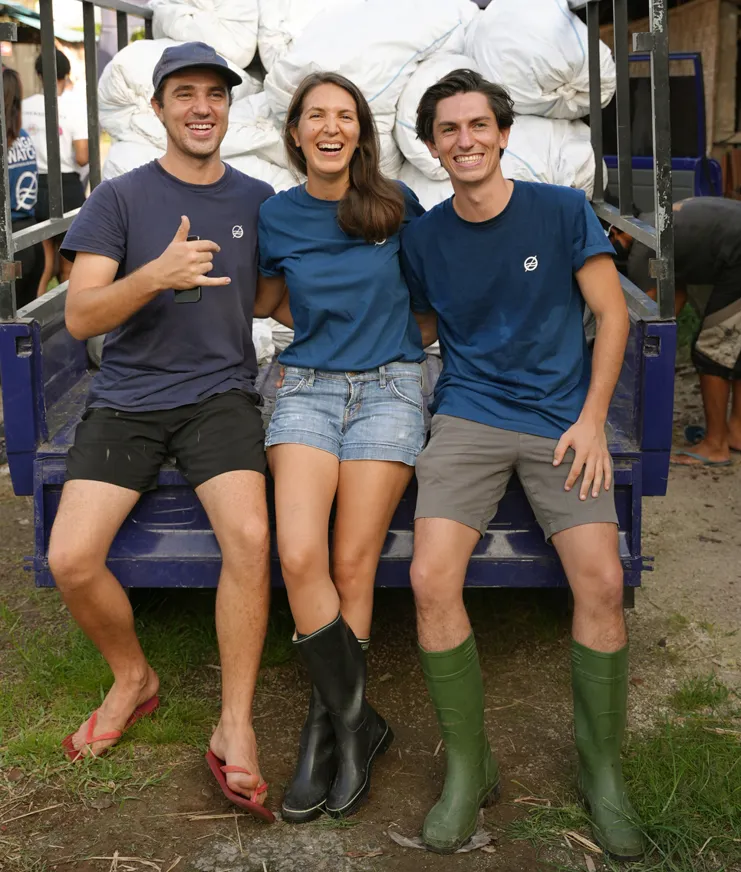
A family affair Gary, Kelly, and Sam started Sungai Watch together
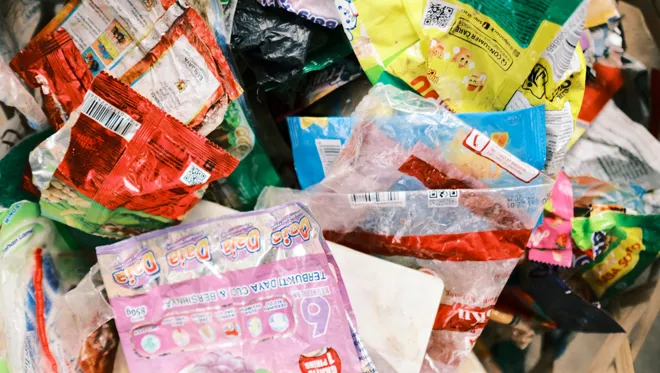
Sorting Plastic is documented by type and brand
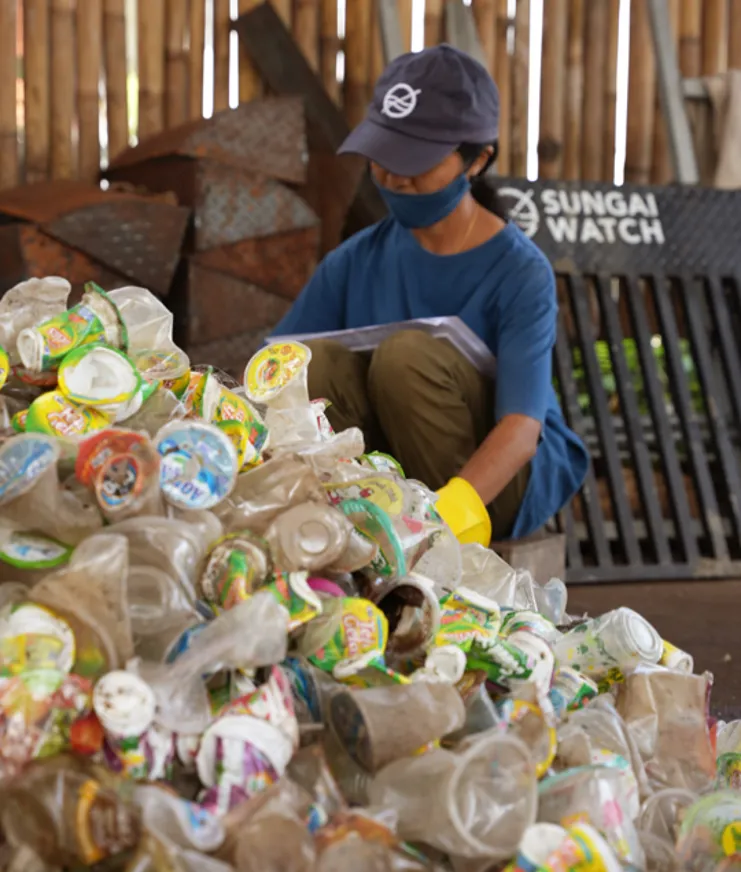
Recycling facility Sungai Watch built one from the ground up
We’ve been getting a lot of reach-outs on social media. It’s been a great way of getting people to collaborate with us. We are yet to launch our first official design collection, Sungai Design, which we’ll be working on in the next quarter. There will be six months of testing the material and figuring out what to make with it.
Probably this summer.
It looks like we’ll be launching at a big design fair later this year.
Earlier this year, we did a big statue with the New York artist Futura, in collaboration with Potato Head, a sustainable hotel here on the island. The sculpture represents a river warrior and was made for the National Design Centre Singapore. It will be touring around the world. It’s a 3-meter-high sculpture that uses 14,000 plastic bags, all melted into sheets and then CNC cut to make this cool 3D sculpture.
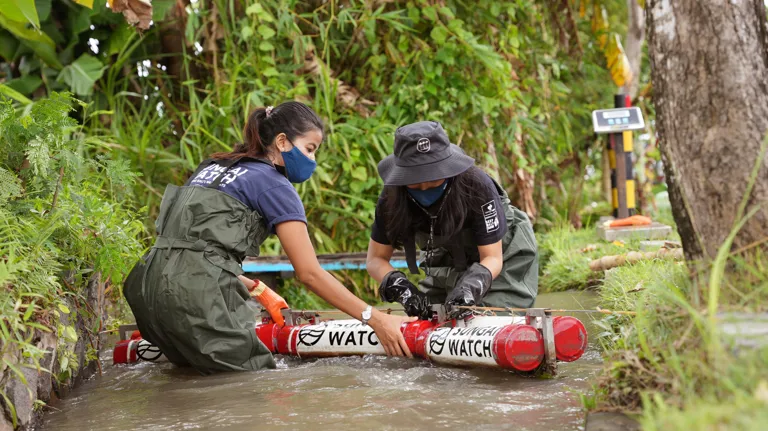
Custom designed barriers There are 100 set up to cover 92 rivers in 28 villages
The 12-square-meter house was entirely built on an off-the-grid location. I now live in it. We ended up upcycling 35,000 plastic bags for the exterior shell. The entire kitchen, shower, and bed frame are also made from recycled plastic cups from Bali’s rivers and beaches. It’s been great to see what is possible with the material, testing it for ourselves before we commercialize the ideas. When we’re recycling plastic from the river, it’s such a deteriorated material—sometimes it has lost its color, has a lot of dirt inside, or its burnt. Our biggest learning has been on the washing and treatment side before turning them into sheets or plastic slabs. It’s incredible that we’re able to recycle such a deteriorating material into a home. We will be creating more homes for disaster relief shelter victims, which we will also be launching later this summer.
I moved in two months ago. I spend more time outdoors but it’s beautiful and eye-opening in that this is my first tiny home living experience. I’ve realized that we don’t need much to be happy and I’m able to reconnect with nature on a whole other level. I’m grateful that I get to have a roof that is made from the trash that we collected.
We were able to insulate well and there’s a good air flow within the house just naturally through exhaust fans and a window that can be opened. The interior shell is bamboo and we’ve used some recycled wood for the flooring, so it’s not fully made of plastic. There is a minimalistic plastic design for the kitchen, bed frame, and bathroom, but the plastic is used more for the exterior shell.
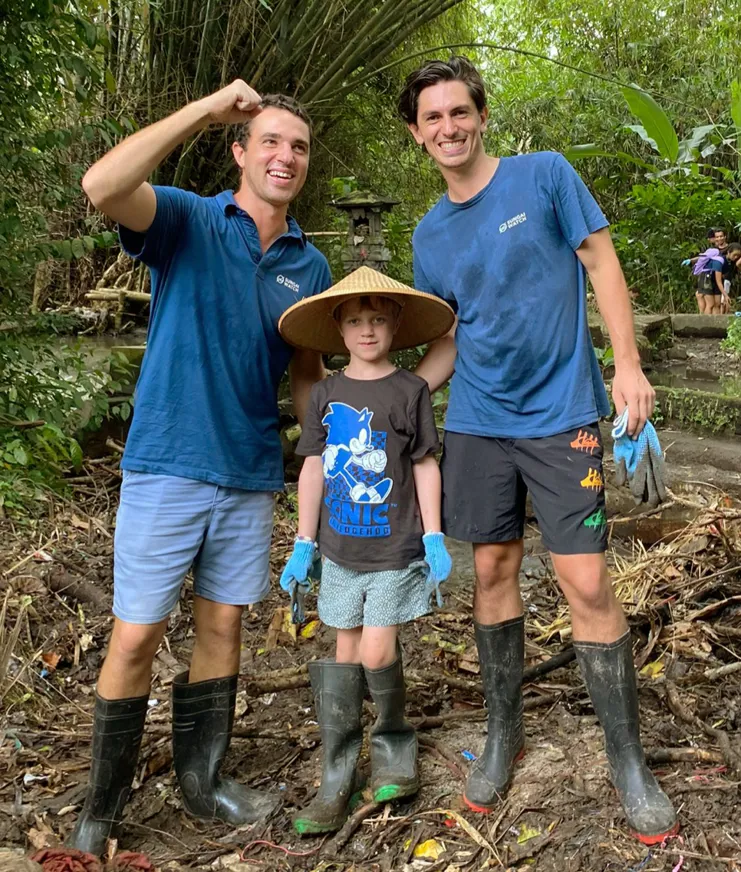
Volunteers Setting up the next generation
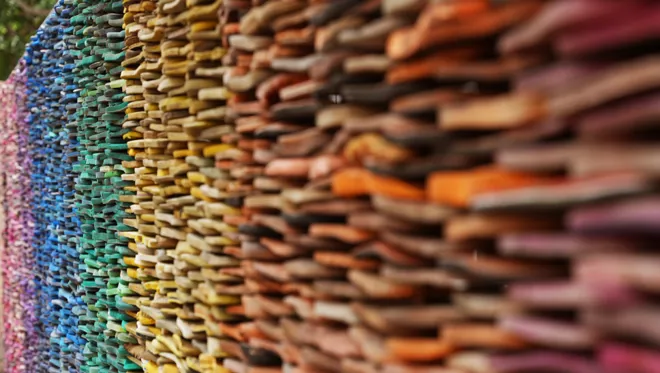
Wall of slippers Sungai Watch collects all kinds of trash from the rivers
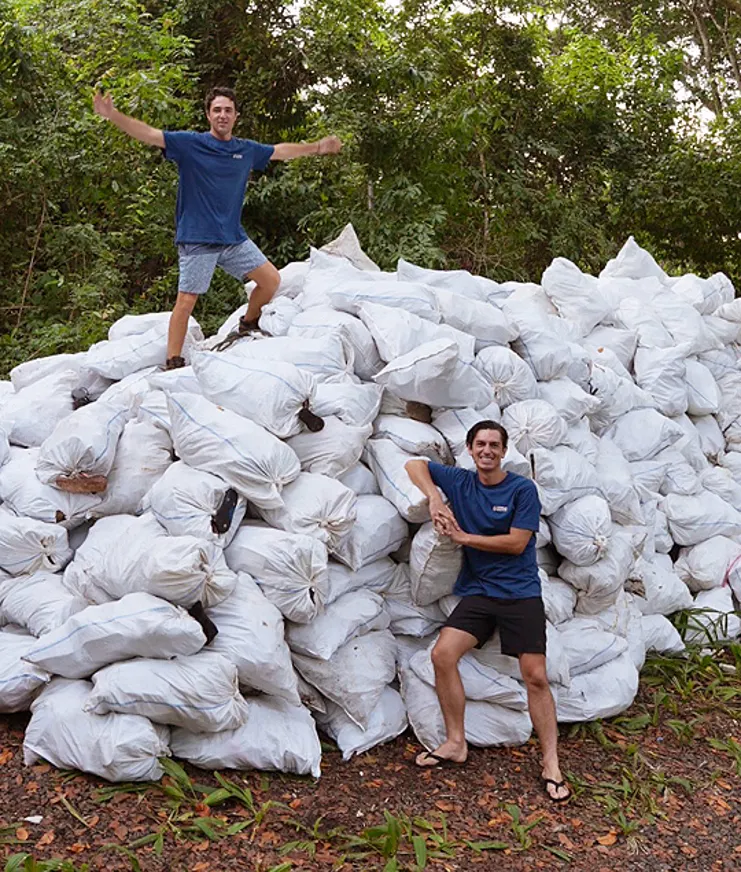
Mangrove regeneration Two years post cleaup
River cleanup, at its core, is an amazing opportunity to collect data and understand where waste travels and what the flaws are in waste management. Through placing simple barriers in every single river, we’re able to track not just the kilos that we’re collecting but to dive deeper into the type of trash and the brands creating them. Sungai Watch always wanted to be more of a data-led organization so we’re basically combining data on every single barrier, every single day. The report represents the yearly data in a way that corporates, especially FMCGs, can’t ignore and it creates greater public awareness. We need to push governmental policies around plastic waste management and plastic packaging.
The Indonesian government is banning single plastics by 2030 and has set goals to regulate legislation and impose a tax on plastic packages. Our data has been used to drive this plastic tax with these corporates, holding them accountable and having more closed-door conversations about what we need to start looking at. There are currently no standards for what brands can use in the plastic layering of their packages. The report helps to know what kinds of plastic packaging are used and showcase what is healthy and how we should ultimately reduce or ban plastic production overall.
The Philippines came out of the blue. I was given the Ramon Magsaysay Award, a big Filipino prize, a couple months ago. We’ve been back and forth now with some interesting partnership opportunities and scaling up our work around Manila Bay. The Philippines is arguably even more polluted than Indonesia in terms of plastics, with the Pasig River being the world’s biggest plastic contributor to the ocean so it felt like a natural next step for us. And it has a similar climate to Indonesia is also an archipelago nation. We’re excited to be expanding the projects later in the fall.
One of the eye-opening moments for us is always traveling to a new country and seeing the exact same issue. We’ve realized that we’re not going to be able to do this alone. We need thousands of other organizations like ours and a massive global collaboration to stop plastic pollution once for all.

River warriors On a mission to collect waste data and work upstream to understand the key sources of plastic pollution
Gary Bencheghib
Ultimately, it’s being a lot more conscious of what we bring and being aware of what happens to everything that we consume—from the water that we use to how a meal is cooked, including what kind of packaging the ingredients come in. It’s about understanding that, while traveling, we can look into how we can give back to local organizations that may need the support. With Sungai Watch, we’ve been successful at getting a lot of tourists every month to come to our cleanups. It’s been an amazing way to get proper manpower. One of our dreams is that every single tourist on the island could dedicate an hour or two just to give back and pick up a little bit of plastic with us.
Research what the current local environmental issues are and understand your impact. Ask yourself what you want to leave behind in terms of a legacy. Everyone may not want to leave something behind, but you can also contribute a couple of dollars to a local charity of choice or help out by volunteering. We can all give back to the place that we travel to and in that way, thank the places for the good times that we had there.
For the next generation out there, no idea is too crazy if it protects the planet. It’s one of the mottos we live by. When we floated down the Citarum River on plastic, we did not know the power such an action could generate. Now, many years later, it’s brought us to living in a tiny plastic home. We need to start dreaming and think outside the box to see how we can find solutions that are going to be instrumental to making sure that we can sustain this Earth.
